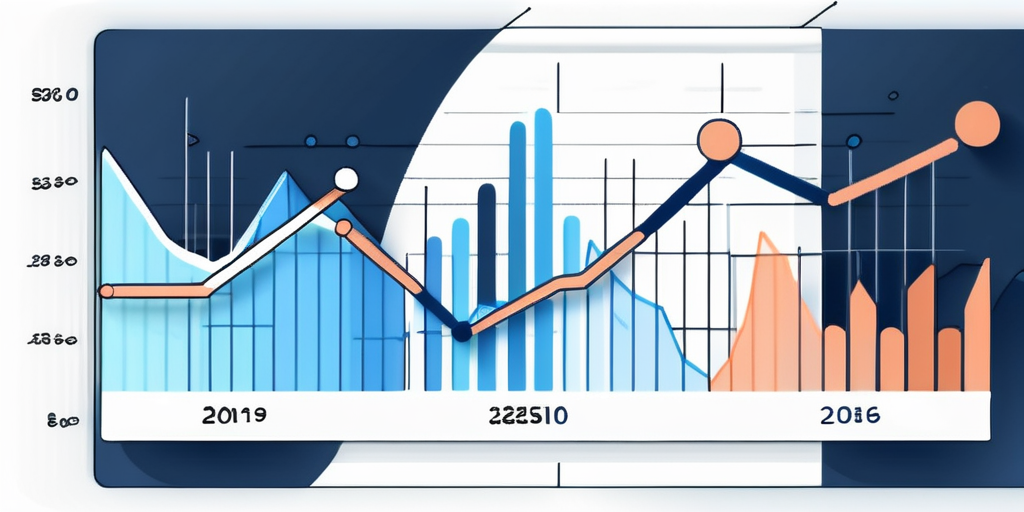In the digital age, the success of a business, particularly a small business, is often determined by its online presence. The ability to generate and convert website leads is a crucial part of this success. This article will delve into the concept of website leads, focusing on the engagement metrics that can help businesses understand and improve their lead generation strategies.
Website leads are potential customers who have shown interest in your business or product by providing their contact information through your website. This could be through a contact form, a newsletter sign-up, or any other method that requires the user to input their information. The process of attracting and converting these leads is a complex one, involving various strategies and metrics.
Understanding Engagement Metrics
Engagement metrics are a set of data points that provide insight into how users are interacting with your website. They can help you understand what is working and what isn’t in your lead generation strategy. By analyzing these metrics, you can make informed decisions about how to optimize your website to attract and convert more leads.

Some common engagement metrics include page views, bounce rate, average session duration, and conversion rate. Each of these metrics provides a different perspective on user engagement, and together, they can give a comprehensive picture of your website’s performance.
Page Views
Page views are a basic engagement metric that measures the total number of pages viewed on your website. This metric can give you a general idea of how much traffic your website is receiving. However, it doesn’t provide much insight into the quality of this traffic or how engaged these visitors are with your content.
For a more in-depth understanding of your website traffic, you can look at unique page views, which only count the first view of a page by a unique visitor. This metric can help you understand how many individual users are visiting your website, as opposed to the total number of pages they are viewing.
Bounce Rate
Bounce rate is the percentage of visitors who leave your website after viewing only one page. A high bounce rate can indicate that visitors are not finding what they are looking for on your website, or that your website is not engaging enough to encourage them to explore further.
However, a high bounce rate is not always a bad thing. For example, if the goal of your website is to provide information, and users are finding the information they need on the first page they visit, they may not need to view any other pages. In this case, a high bounce rate could indicate that your website is effectively meeting the needs of its users.
Conversion Rate
The conversion rate is arguably the most important engagement metric for lead generation. It measures the percentage of visitors who complete a desired action on your website, such as filling out a contact form or signing up for a newsletter. A high conversion rate indicates that your website is effectively persuading visitors to take these actions, which can lead to more leads and ultimately, more customers.

There are many factors that can affect your conversion rate, including the design of your website, the quality of your content, and the relevance of your offer to your target audience. By analyzing your conversion rate in conjunction with other engagement metrics, you can identify areas of your website that may need improvement.
Improving Conversion Rate
There are many strategies you can use to improve your conversion rate. One of the most effective is to make your call-to-action (CTA) clear and compelling. Your CTA is the instruction that tells visitors what action you want them to take. It should be prominently displayed on your website and should clearly communicate the value of taking this action.
Another strategy is to optimize your landing pages. These are the pages that visitors land on after clicking on your CTA. They should be designed to persuade visitors to complete the desired action, by providing clear and compelling information about the benefits of doing so.
Average Session Duration
Average session duration is the average amount of time that visitors spend on your website during a single visit. This metric can give you an idea of how engaged visitors are with your content. A longer average session duration indicates that visitors are spending more time exploring your website, which can increase the chances of them completing a desired action and becoming a lead.

However, a longer average session duration is not always a good thing. If visitors are spending a lot of time on your website but are not completing the desired action, this could indicate that they are having difficulty finding the information they need or understanding how to take the desired action.
Improving Average Session Duration
There are several strategies you can use to improve your average session duration. One of the most effective is to provide high-quality, relevant content that meets the needs of your visitors. This can encourage them to spend more time exploring your website and increase the chances of them becoming a lead.
Another strategy is to improve the usability of your website. This includes making your website easy to navigate, ensuring that it loads quickly, and making it responsive so that it looks and functions well on all devices. By improving the usability of your website, you can make it easier for visitors to find the information they need and take the desired action.
Conclusion
Engagement metrics are a crucial tool for understanding and improving your website lead generation strategy. By analyzing these metrics, you can identify areas of your website that are performing well, as well as areas that may need improvement. This can help you optimize your website to attract and convert more leads, ultimately leading to more customers and growth for your business.
Remember, the goal of your website is not just to attract as many visitors as possible, but to attract the right visitors – those who are likely to become leads and ultimately, customers. By focusing on engagement metrics, you can ensure that your website is not just attracting traffic, but attracting the right kind of traffic.
Frequently Asked Questions
What are Engagement Metrics?
Engagement metrics are quantitative measures used to assess how actively users interact with content, products, or services online. These metrics help understand the level of interest and involvement users have with a brand’s offerings, including websites, social media, apps, and more. Common examples include likes, shares, comments, time on page, click-through rates (CTR), and conversion rates. These metrics provide insights into the effectiveness of content and marketing strategies, user satisfaction, and areas for improvement.
Why are Engagement Metrics important?
Engagement metrics are important because they offer tangible data on how users are interacting with your brand across various platforms. By analyzing these metrics, businesses can:
- Gauge Content Effectiveness: Understand which types of content resonate most with their audience.
- Improve User Experience: Identify areas where the user experience may be lacking and make necessary adjustments.
- Optimize Marketing Strategies: Tailor marketing efforts based on what drives engagement, increasing ROI.
- Enhance Customer Loyalty: Engaged users are more likely to develop loyalty to a brand, leading to repeat business and advocacy.
What are the most commonly used Engagement Metrics?
The most commonly used engagement metrics include:
- Time on Page/Session Duration: Measures how long users stay on a page or website, indicating content relevance and interest.
- Bounce Rate: The percentage of visitors who navigate away from the site after viewing only one page, suggesting the content might not have met their expectations.
- Click-Through Rate (CTR): The ratio of users who click on a specific link to the number of total users who view a page, email, or advertisement.
- Social Interactions: Includes likes, shares, comments, and follows on social media platforms, reflecting user interest and content virality.
- Conversion Rate: The percentage of users who take a desired action, such as making a purchase or signing up for a newsletter, indicating the effectiveness of engagement in driving outcomes.
How can businesses improve their Engagement Metrics?
Businesses can improve their engagement metrics by:
- Creating Valuable Content: Produce high-quality, relevant content that meets the needs and interests of your target audience.
- Enhancing User Experience: Ensure websites and apps are user-friendly, fast-loading, and accessible on various devices.
- Personalization: Tailor content and marketing messages to individual user preferences and behaviors.
- Encouraging Interaction: Include calls-to-action (CTAs) that invite users to engage, such as leaving a comment, sharing content, or participating in polls.
- Regular Testing and Optimization: Use A/B testing to experiment with different content formats, layouts, and CTAs to see what maximizes engagement.
What challenges are associated with measuring Engagement Metrics?
Challenges in measuring engagement metrics include:
- Data Overload: Collecting vast amounts of data can be overwhelming, making it difficult to identify which metrics are most meaningful.
- Interpreting Data: Understanding the context behind the metrics (e.g., why a bounce rate is high) can be complex and requires deep analysis.
- Platform Variability: Engagement metrics can vary significantly across different platforms, making standardization and comparison challenging.
- Attribution: Determining which specific content or strategy led to an increase in engagement metrics can be difficult, especially when multiple factors are at play.
- Privacy Regulations: Increasing privacy concerns and regulations can limit the availability of data, impacting the accuracy of engagement metrics.